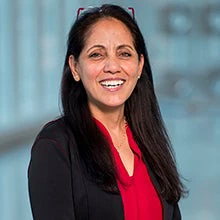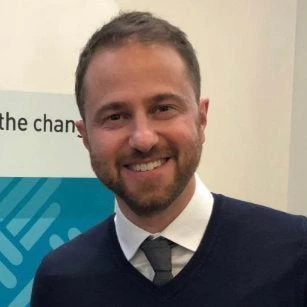One year into the COVID-19 pandemic, the health crisis has triggered an economic crisis and a protracted rise in food insecurity. Basic sustenance has become unaffordable for the world’s poorest, and disruptions of health and nutrition services will have long term consequences. Even before the pandemic, the world was not on track to meet the Sustainable Development Goal 2 (SDG2) goal of Zero Hunger.
Overall, COVID-19 is expected to have pushed an unprecedent 135 million into acute food insecurity, with 34 million at risk of famine. One estimate projects that over and above the 149 million stunted children today, an additional 9.3 million children will suffer from acute malnutrition, and 2.6 million more children will be stunted by 2022, rolling back years of progress. They will learn less in school and will grow up to be less productive as adults.
The pandemic further reminds us that over 70 percent of overweight/obese individuals live in Low- and Middle-Income Countries. Obesity increases COVID-related deaths by 48 percent, hospitalization by 113 percent, and Intensive Care Unit admission by 74 percent.
An opportunity to pivot to green, resilient, and inclusive development
It is against this backdrop that, the World Bank convened a closed door roundtable at the 2021 Spring Meetings, to highlight potential actions and identify financing solutions for SDG2. Chaired by World Bank Managing Director, Mari Pangestu, and United Nations Deputy Secretary-General, Amina Mohammed, the event gathered thirteen finance and development ministers and senior representatives from 13 countries (Belgium, Canada, Germany, Indonesia, India, Japan, Mexico, Norway, Pakistan, Philippines, Rwanda, the United Kingdom and the United States) along with World Bank Vice Presidents for Sustainable Development, Juergen Voegele, and for Human Development, Mamta Murthi.
The meeting agreed that to get back on track, countries will need to address the short-term damage caused by COVID-19 but also have a clear line of sight to the long-term drivers of food and nutrition security. Health systems will need to be strengthened to continue to deliver essential health and nutrition services. And countries will need to build a food system capable of delivering healthier economies, healthier people, and a healthier planet.
For decades, the way food is produced and consumed has been associated with under-nutrition, obesity, diet-related chronic diseases, and undermining the sustainability of food production. The pandemic offers a once-in-a-generation chance to pivot towards green, resilient, and inclusive development.
Adopting multi-sectoral and multi-institutional approaches
Some promising lessons are emerging from multi-sectoral and multi-institutional approaches. These bring professionals and practitioners from agriculture, food, health, nutrition, and social protection together to address food and nutrition security needs, using a gender lens and paying particular attention to pregnant/lactating women and children below two years of age.
For example, the Minister of Finance from Rwanda highlighted how their stunting reduction program incorporates both a supply side and a demand-side solution – covering a health project and a social safety net program, complemented with an agriculture project.
The World Bank highlighted the need to build on global social protection responses to the pandemic for increasing resilience, harnessing human capital and bolstering economic inclusion. For instance, the Sahel Adaptive Social Protection platform has shown that combining cash transfers with other interventions positively impact income, livelihoods, asset ownership, and savings.
The roundtable also highlighted the scale of the challenge and exhorted ministers to consider repurposing agricultural subsidies and expenditures to support actions that accelerate the transformation of the food system to one that is not only productive and resilient, but also improves health and nutrition, and delivers climate benefits.
Stepping up to the financing challenge
To achieve SDG2, countries will need access to financing. At a time when ODA and domestic resources are constrained, innovative financing instruments that can crowd-in non-traditional sources of financing will be needed.
We have partnered with The Power of Nutrition in several countries, and nations like Mexico are developing their own innovative solutions, such as the sale of SDG bonds up to US$15 billion per year. Others are experimenting with taxation on unhealthy foods.
The World Bank Group has provided US$5.3 billion IDA for food security. We are also actively engaging with partners to seek ‘game-changing’ solutions on financing SDG2. As stated at the round-table, the upcoming UN Food Systems Summit in September and the high-level Nutrition for Growth Summit (N4G) pledging event hosted by the Government of Japan in December 2021 will be important milestones.
A whole of government and a whole of World Bank Group approaches
The world is facing a triple challenge: Ensuring food and nutrition security for all, protecting livelihoods, and using natural resources sustainably while reducing greenhouse gas emissions. Addressing these require financing for three things:
First, we need resilient and sustainable increases in agricultural productivity and affordable healthy foods available on local markets.
Second, we need to ensure uninterrupted access to nutrition and health services so that children can achieve their full economic potential.
Third, we also need to protect families from shocks by putting in place risk-responsive and adaptive social safety nets linked to food and nutrition security.
Achieving SDG2 by 2030 is still possible but will require significantly scaled-up and sustainable financing from domestic, overseas development aid, and innovative financing sources so we can kick-start the journey towards a green, resilient, and inclusive recovery with a strong focus on human capital under IDA20.
We have the will and the wherewithal – let’s do it!







Join the Conversation